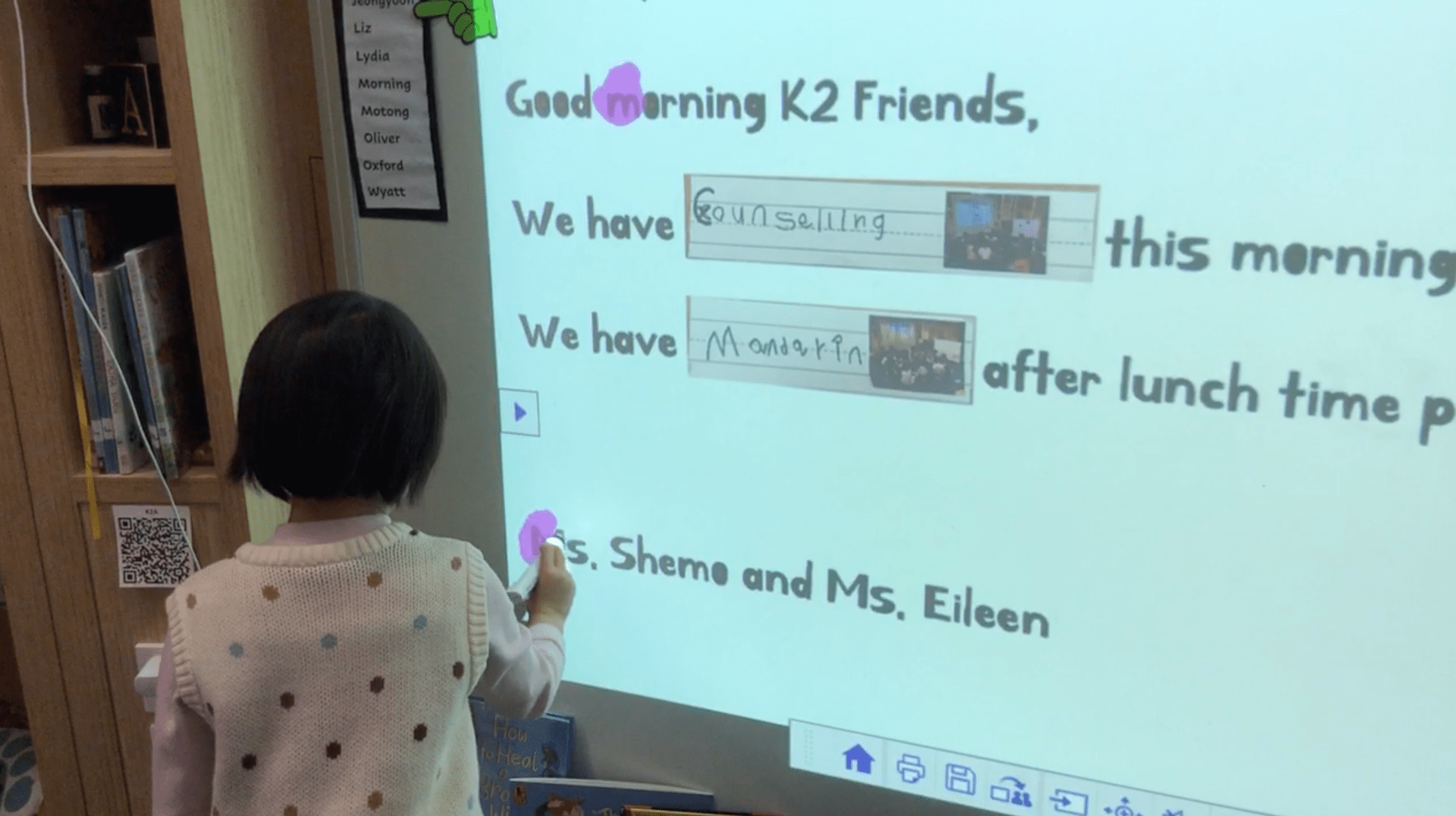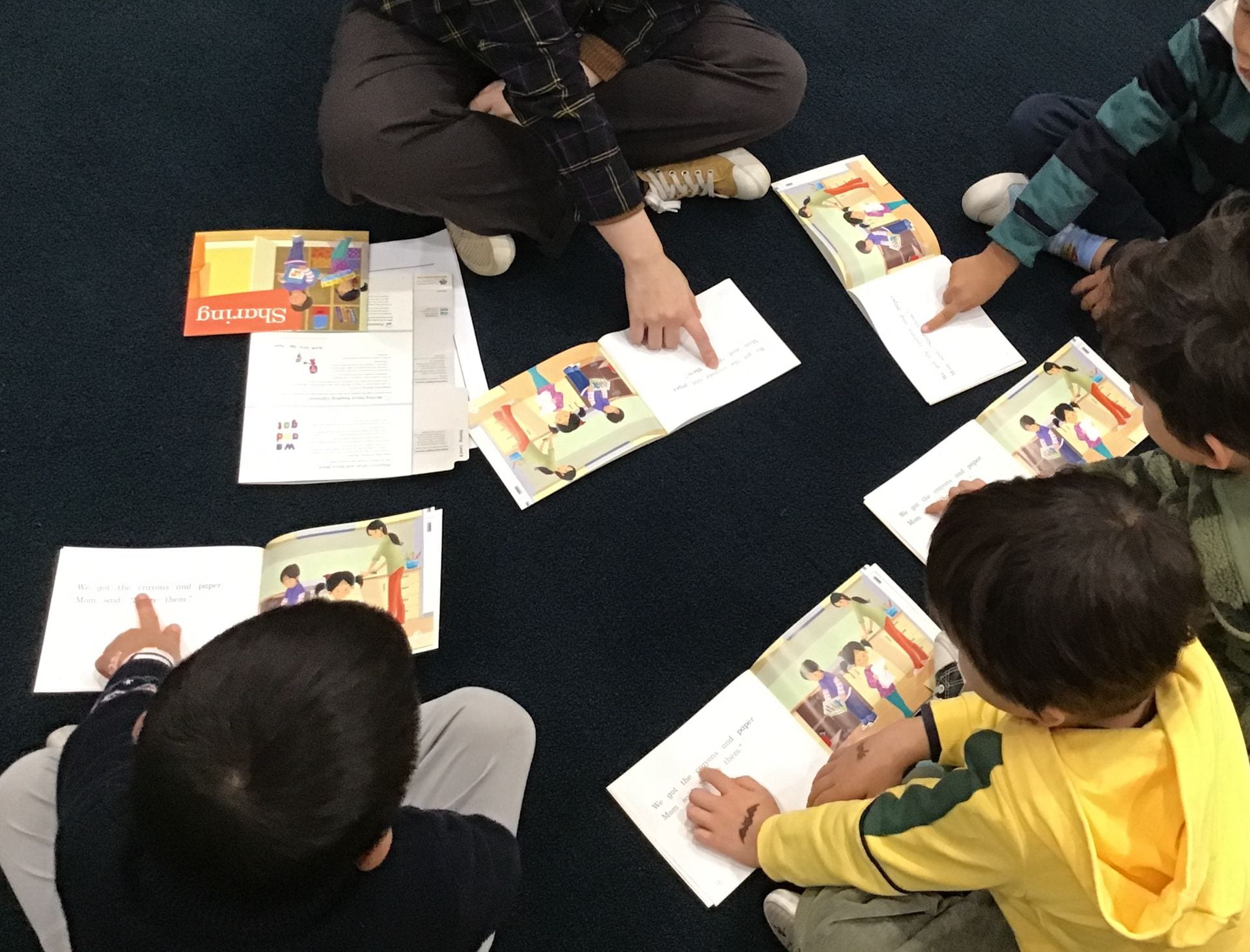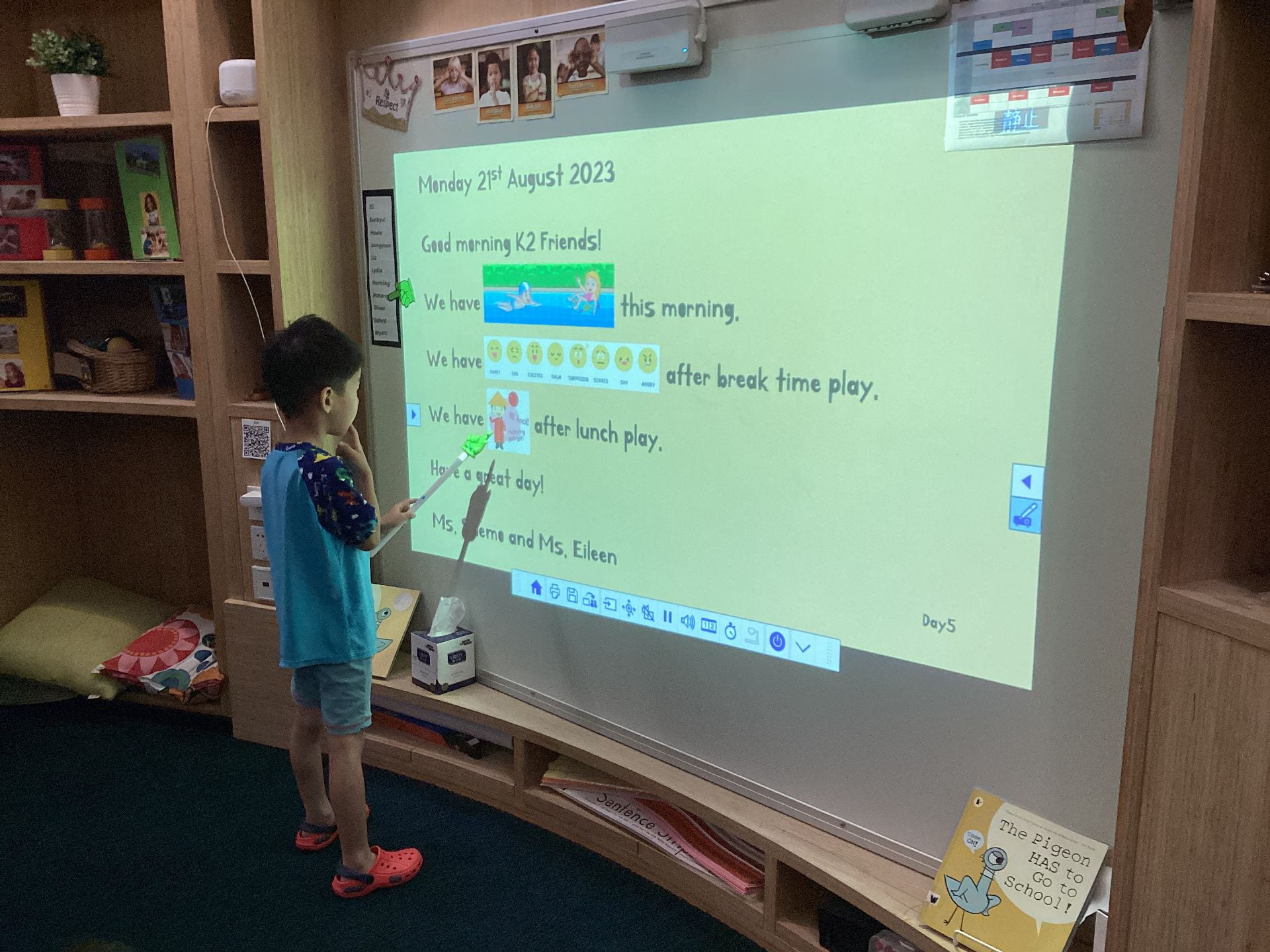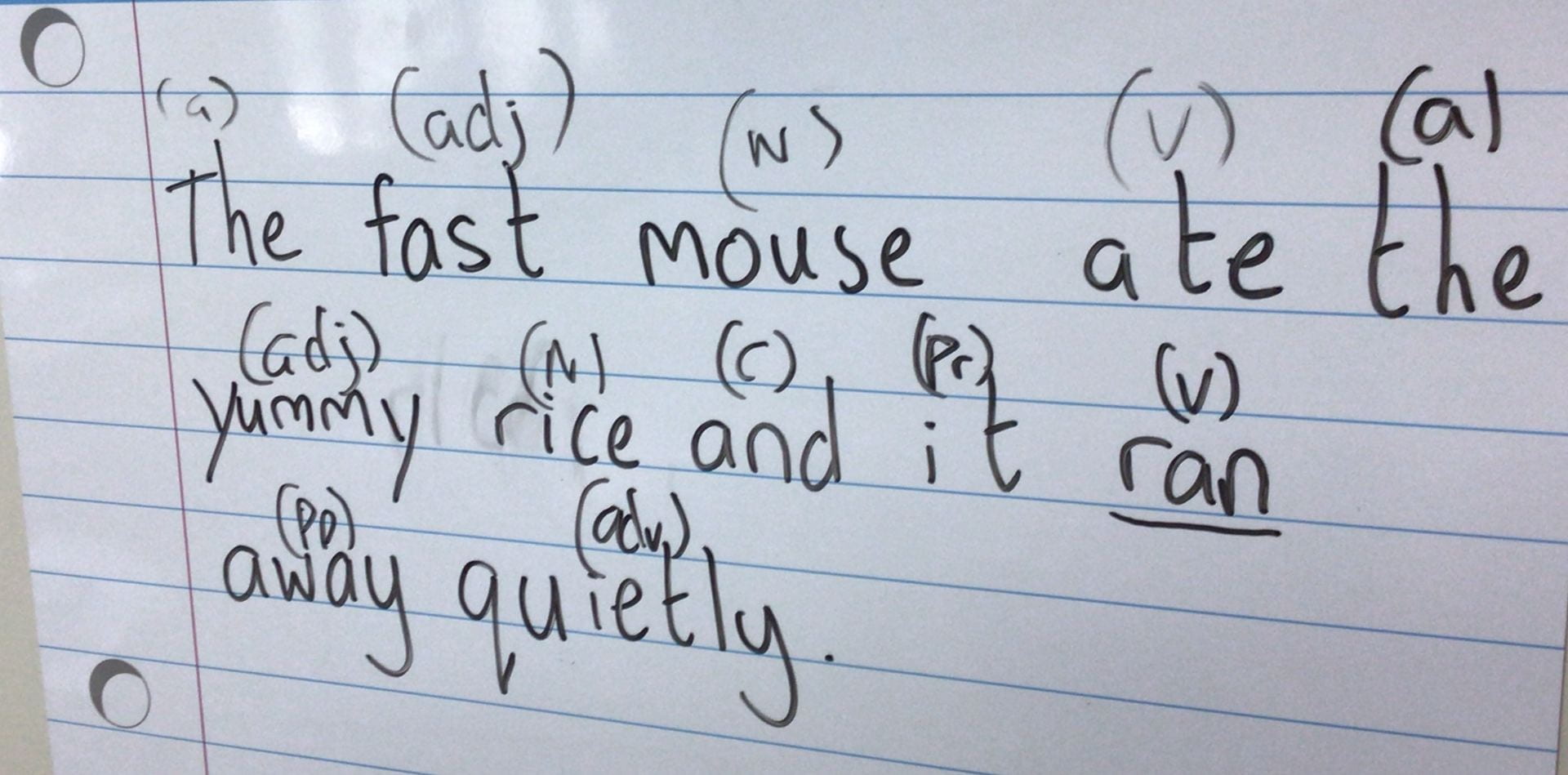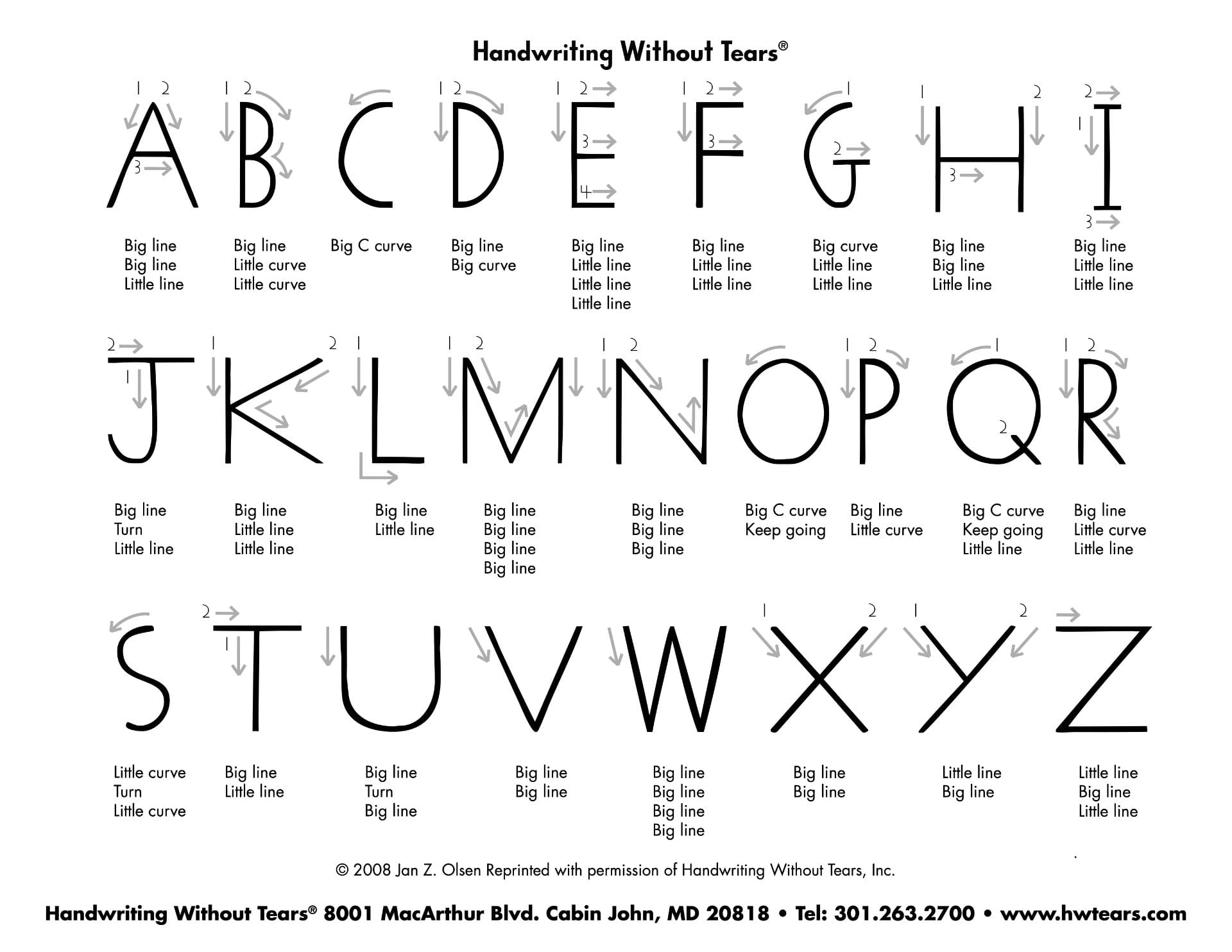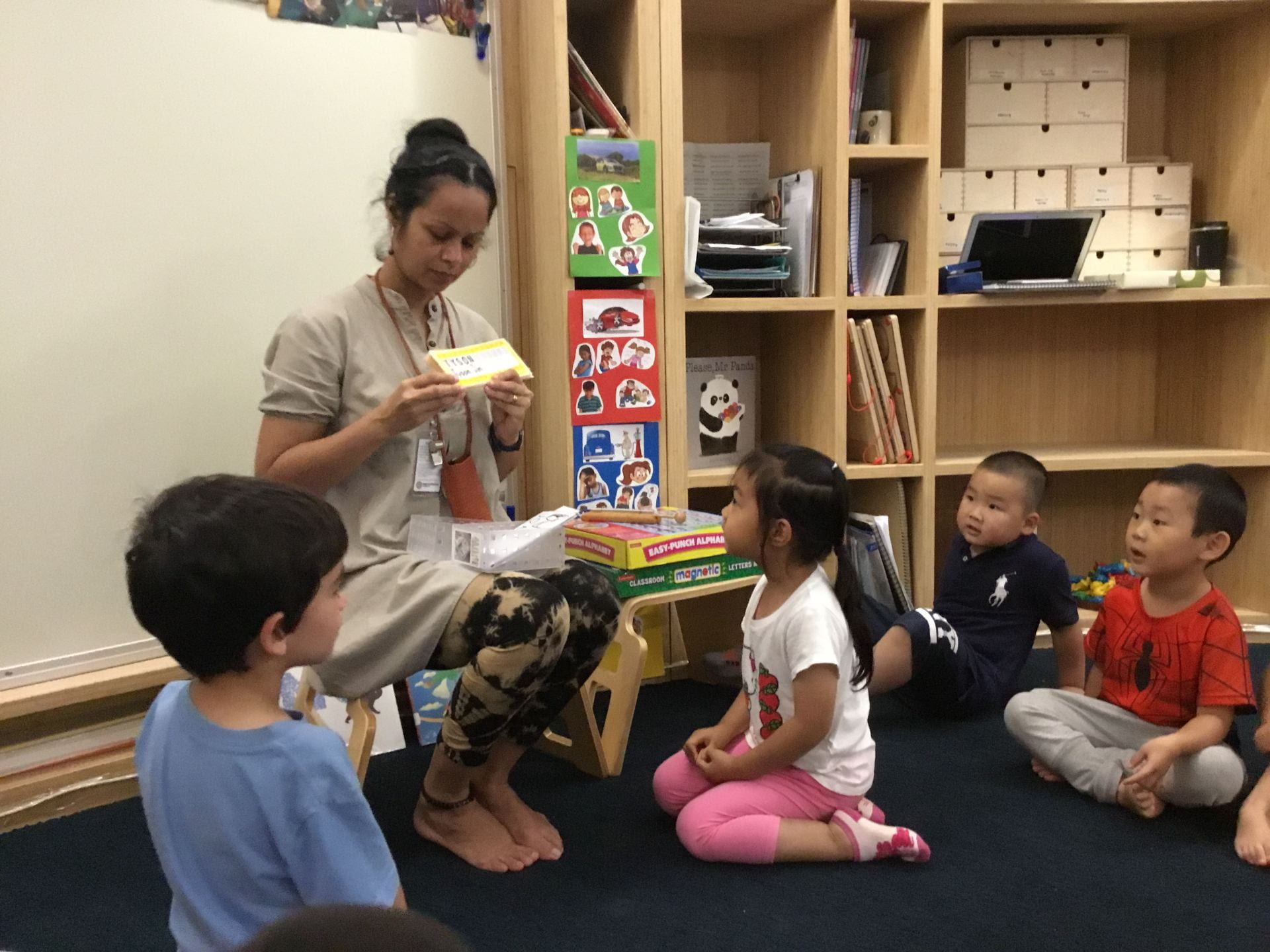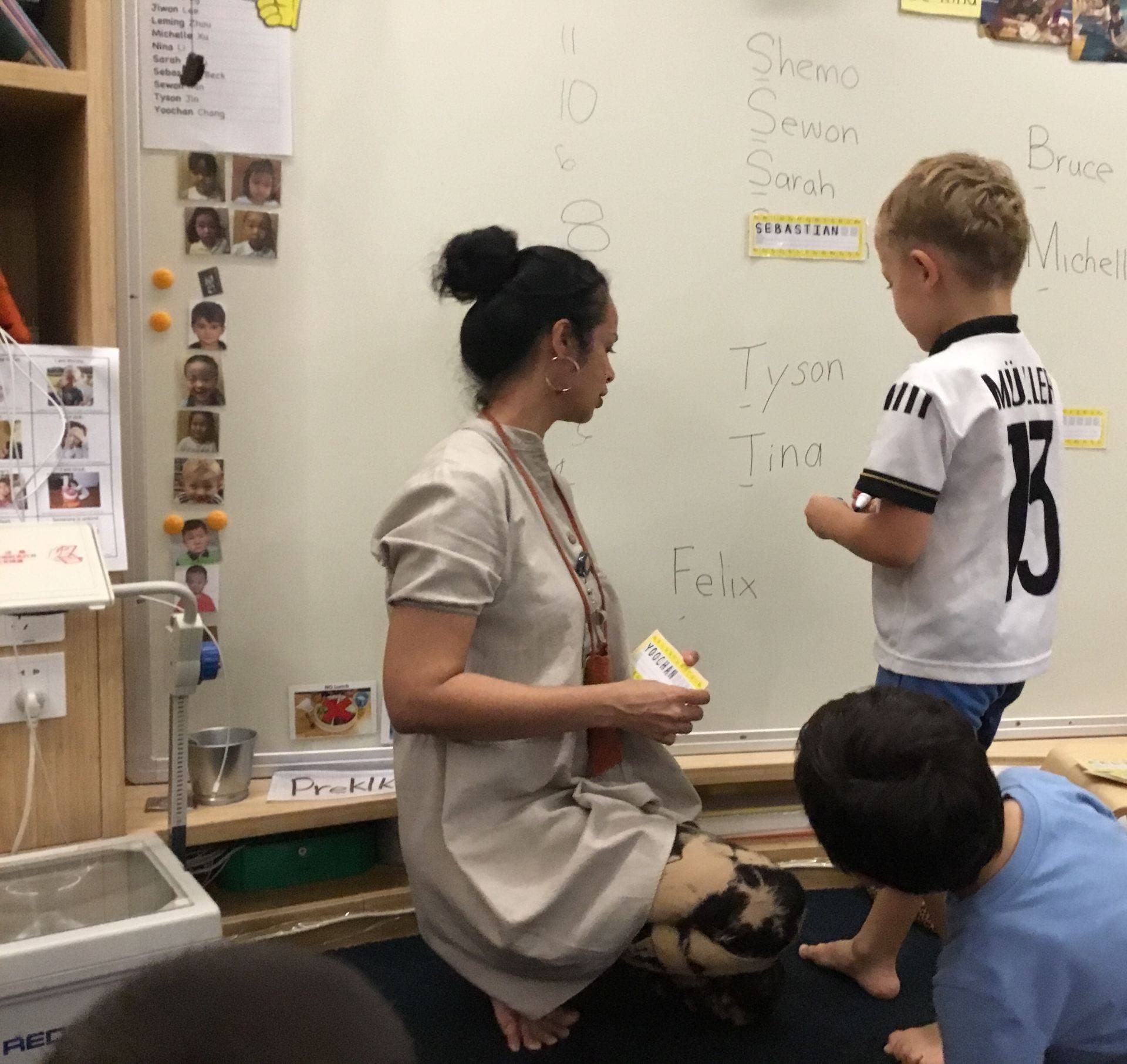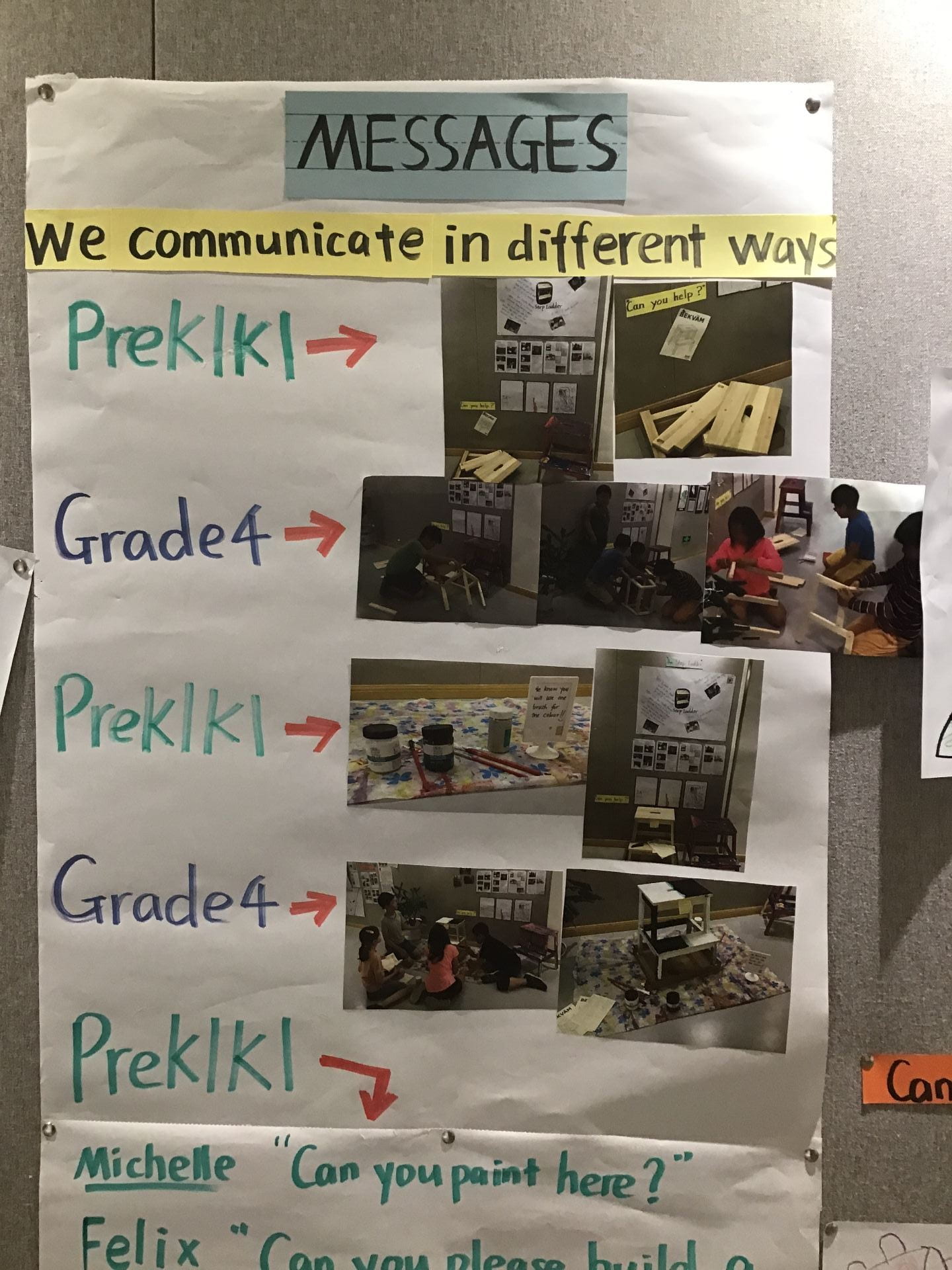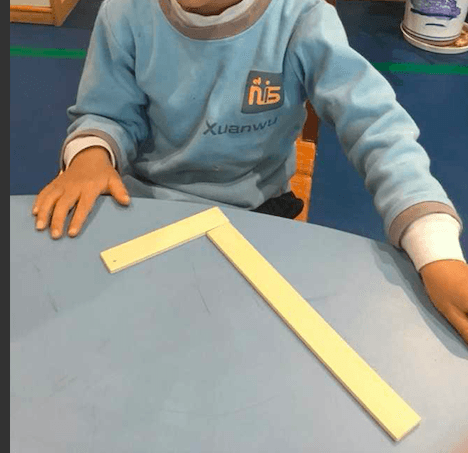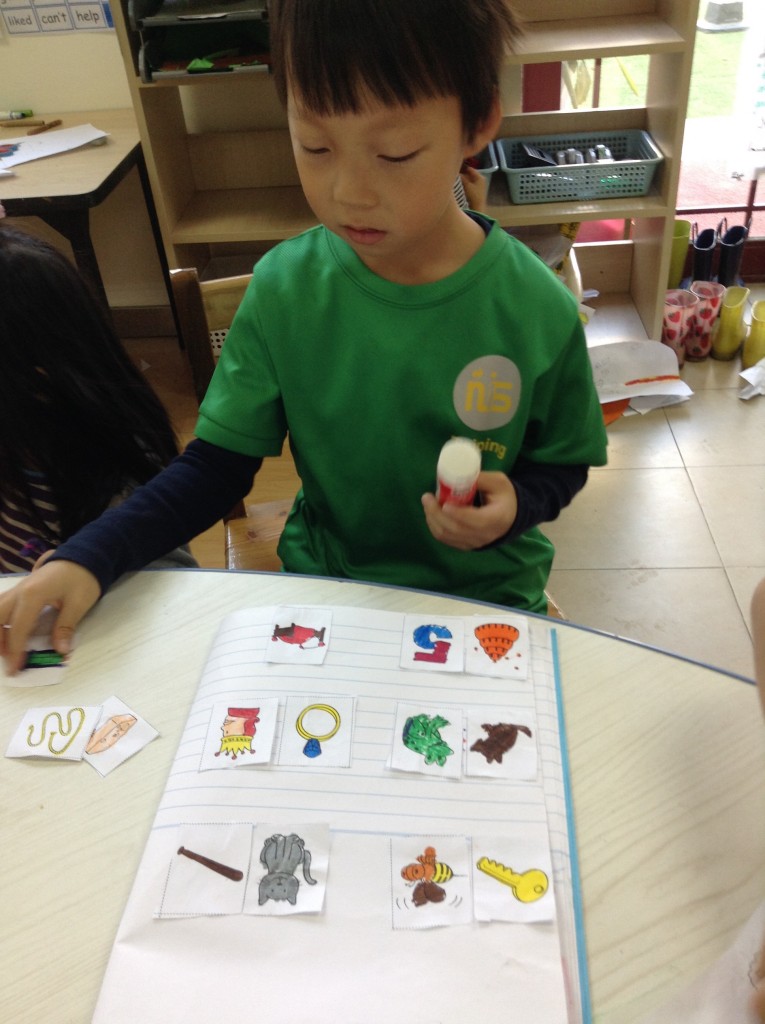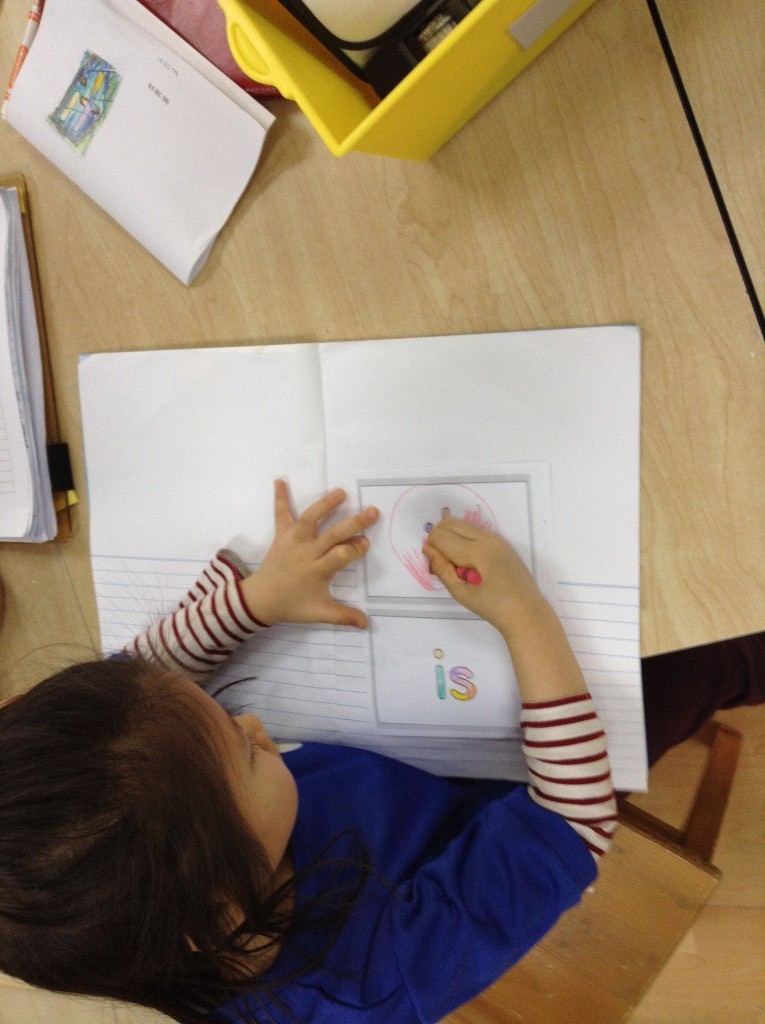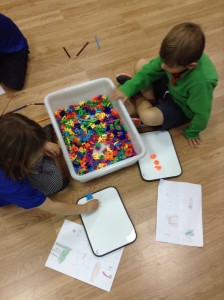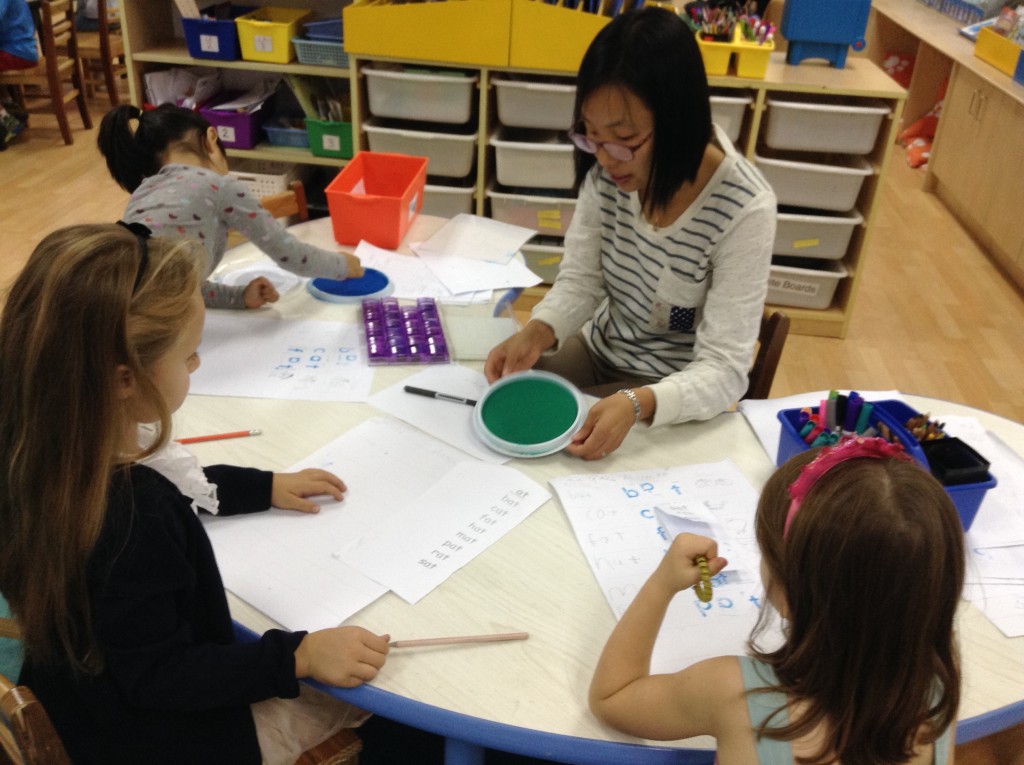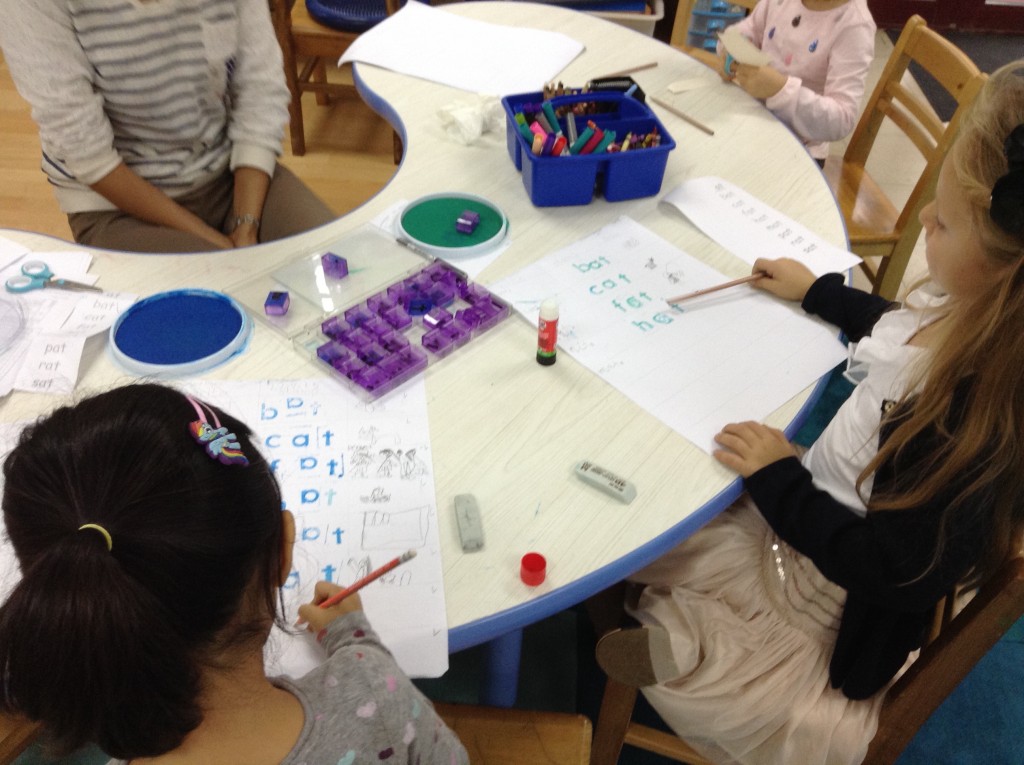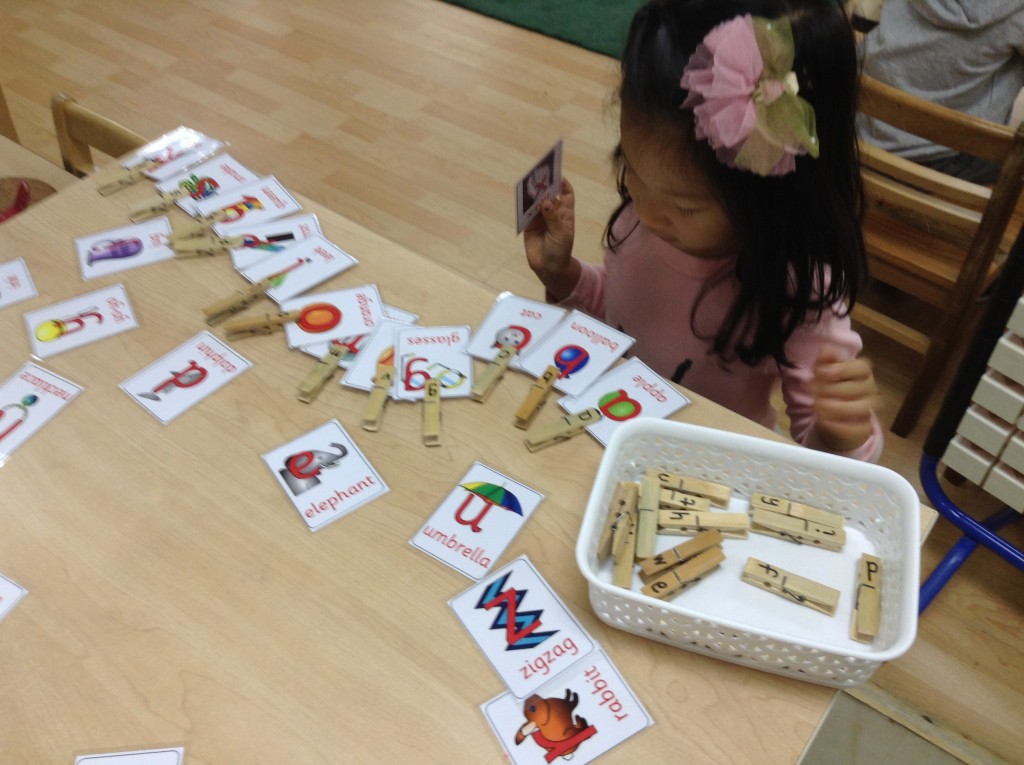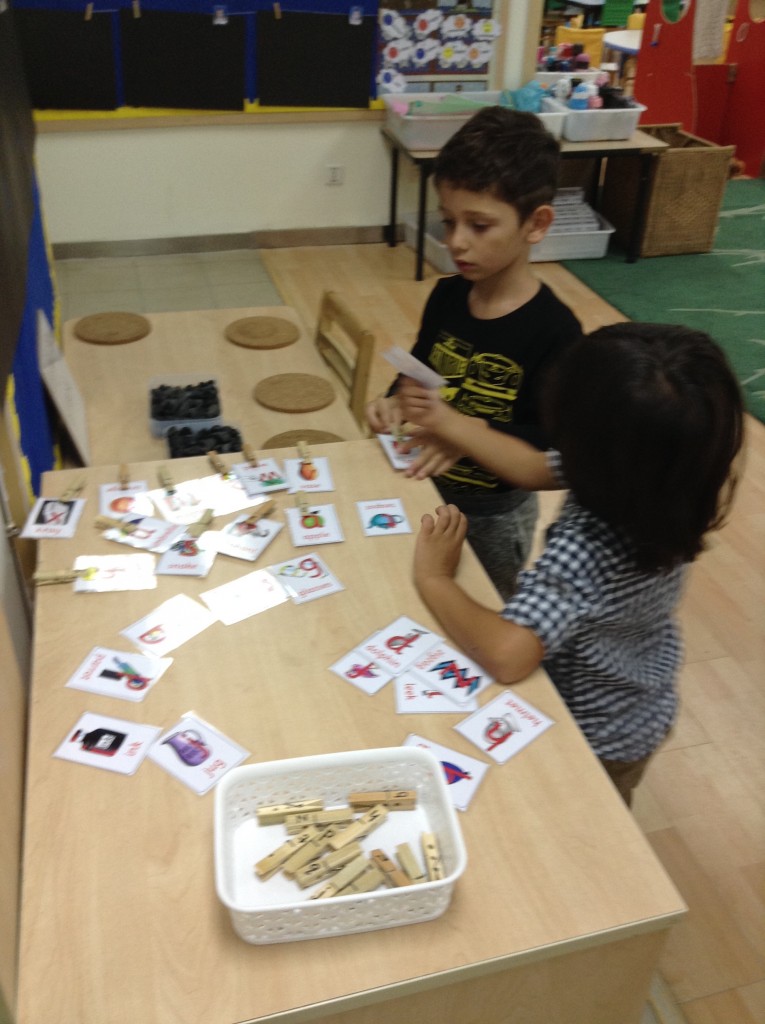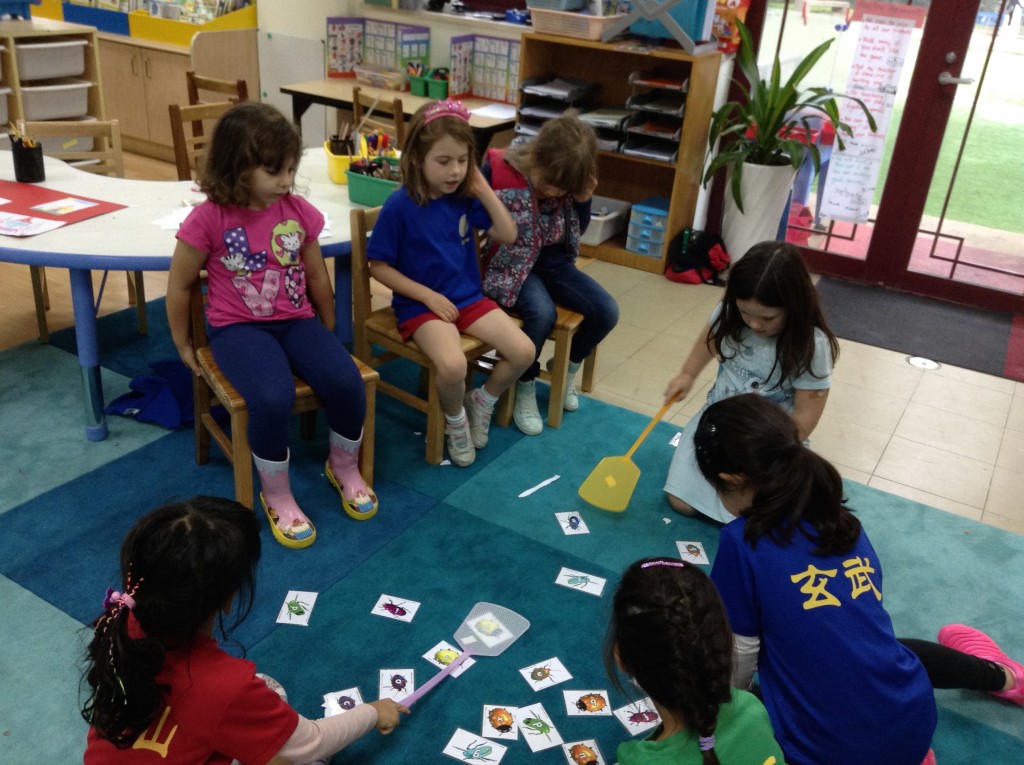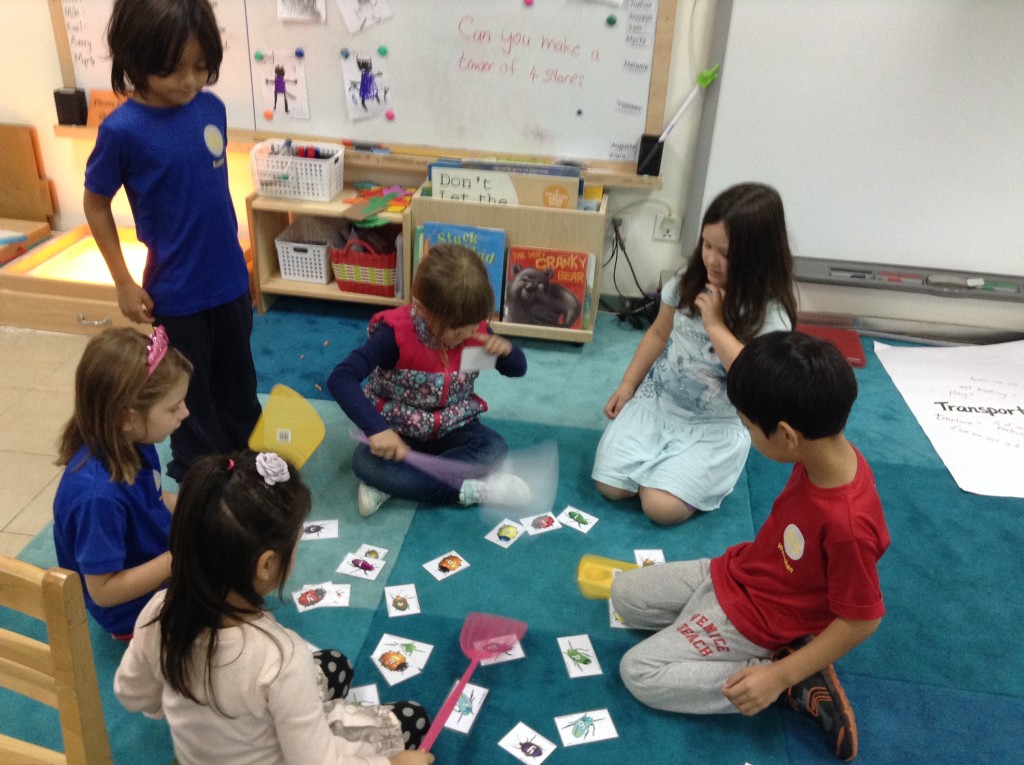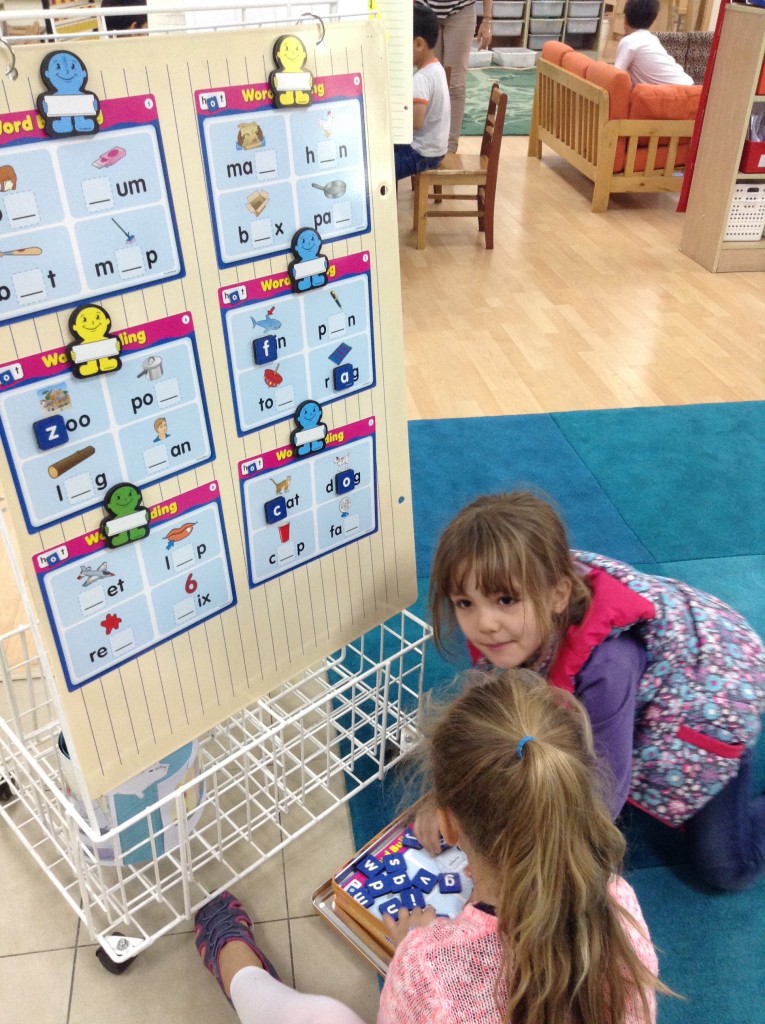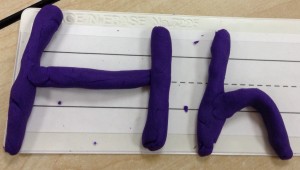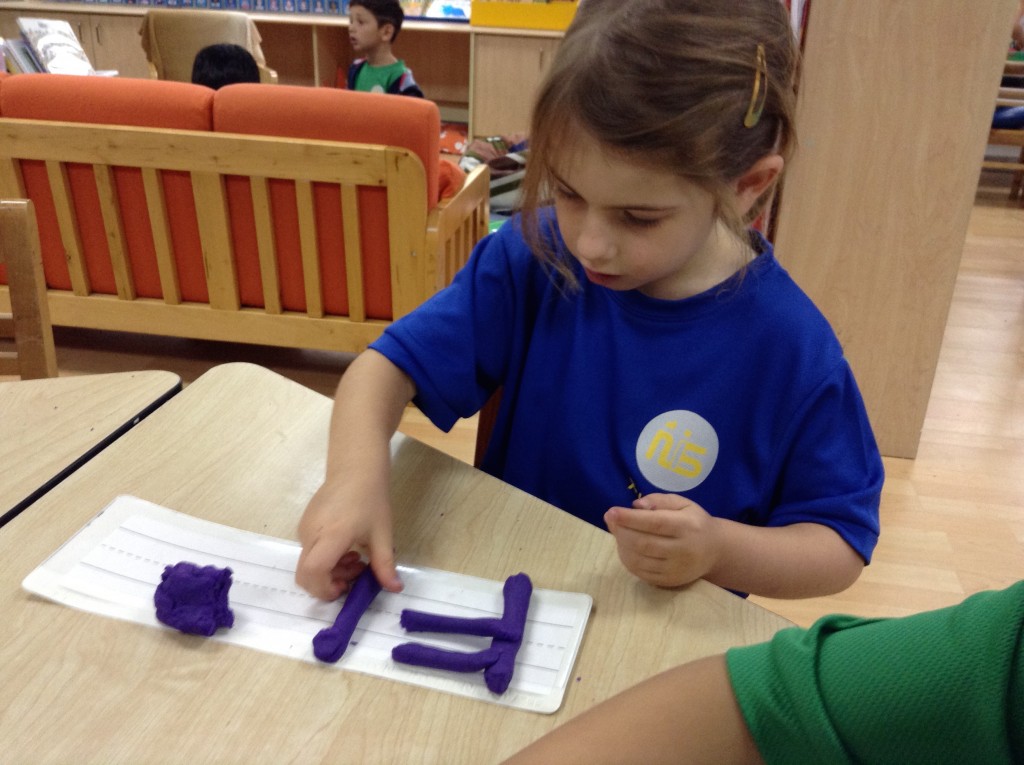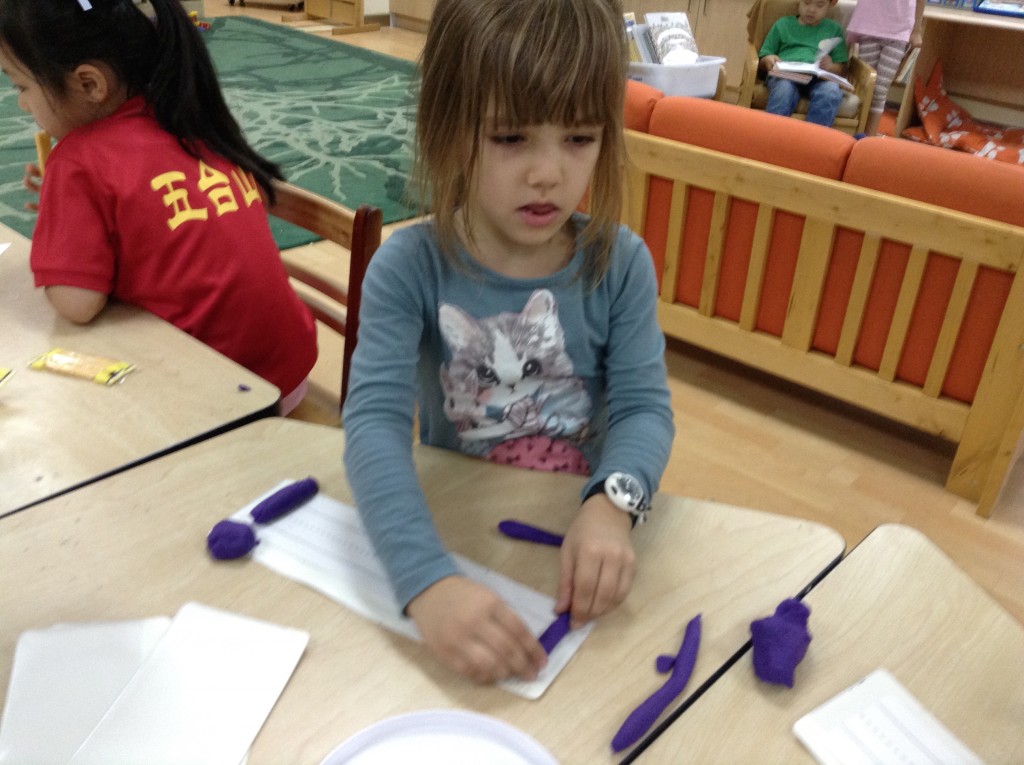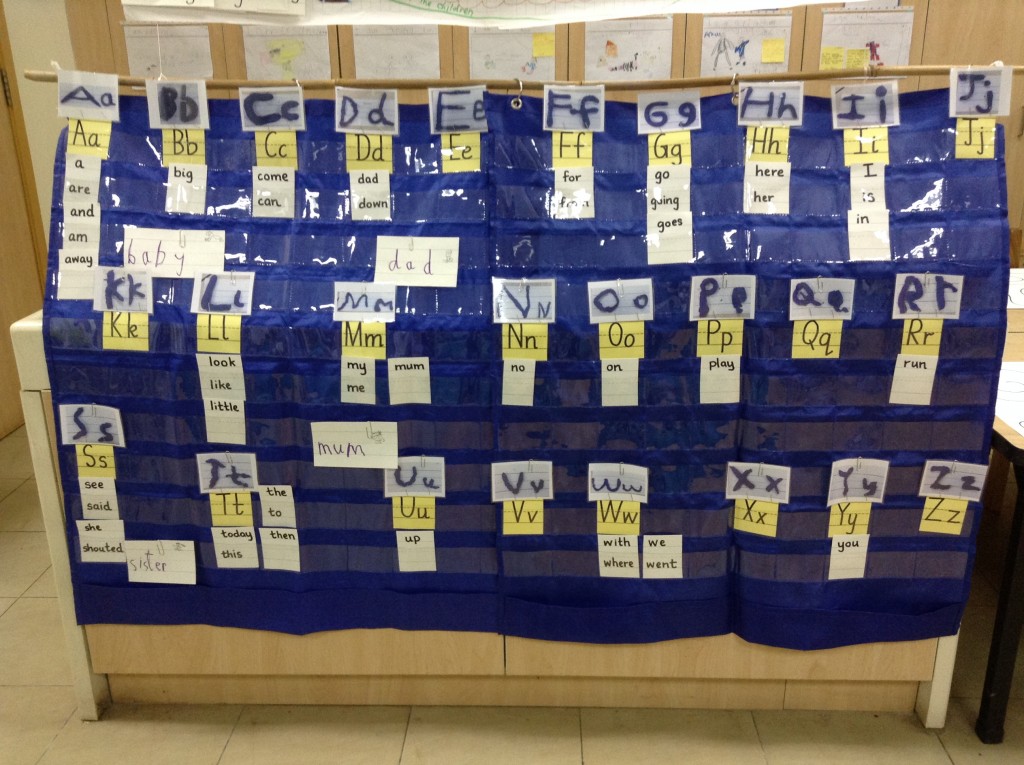Readers, Writers and Mathematicians
At the beginning of the school year, the children wrote the morning message. They used what they knew about letters and sounds to spell the words.
The Morning Message often includes a question or a wondering that leads to discussions, literacy or mathematical activities. While reading the message we identify letters of the alphabet and familiar High Frequency words. The children are encouraged to notice important reminders as writers; spaces between words, capital letters to start a sentence and punctuation at the end of a sentence.
Groups of children often meet with a teacher to work on key literacy skills. These are dedicated times when the children explore books to learn the different skills and strategies that readers and writers use to communicate effectively.

 Activities that follow reading experiences usually involve reflecting on reading and using drawing, writing and spoken words to express an idea. The children might share an important part of the story, talk about the characters and settings, or discuss the different ideas presented in fiction and non-fiction texts.
Activities that follow reading experiences usually involve reflecting on reading and using drawing, writing and spoken words to express an idea. The children might share an important part of the story, talk about the characters and settings, or discuss the different ideas presented in fiction and non-fiction texts.
It is important to remember that each child is an individual who works on specific skills while reading independently or collaboratively.
With prompting and support the children:
- ask and answer questions about key details in a text
- retell familiar stories, including key details
- identify characters, settings, and major events in a story
- ask and answer questions about unknown words in a text.


